Want to book an appointment with Dr. Greenwald? CLICK HERE.
Hello again Cyclone Fanatics!
It’s Dr. Thomas Greenwald here bringing you some information about the most commonly injured joint in the world – the ankle. Quite often this joint can be injured during sports activities, either with a sprain, stretching of the ligaments, a fracture or breaking of the bone.
Dr. Peter Buck, Dr. Bryan Warme and I all see these injuries on a weekly basis in weekend warriors as well as in athletes. And I’m sure many of you either have had an ankle injury yourself, or had a family member with an ankle injury. Certainly, these ankle injuries impact our Cyclone athletes and they can cause the athlete to miss valuable playing time – even at times requiring surgical treatment. Dr. Warme has previously written about ankle sprains, so I will tackle ankle fractures in today’s blog.
ANKLE ANATOMY
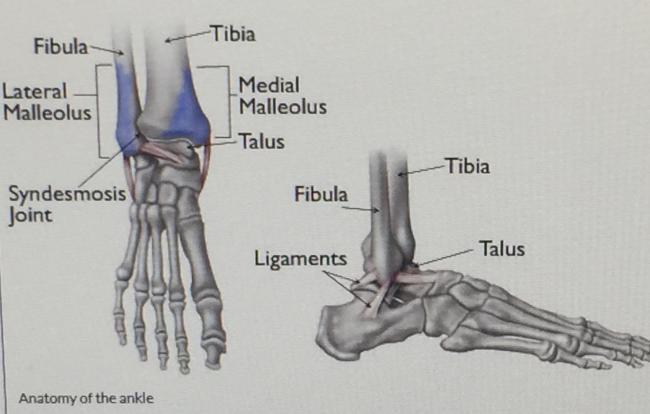
Three bones make up the ankle joint; TIBIA, FIBULA & TALUS. Any of these can break, but most commonly it’s the fibula (outside bone – lateral malleolus) or the tibia (inside bone – medial malleolus), or both.
Treatment can be non-operative if the broken bone is not displaced (out of position), but not infrequently surgery is required to reduce the fracture (line up the bones) and hold them in position with plates and screws.
A period of immobilization (with casting/splinting) is typically required, followed by rehabilitation that requires the regaining of motion and function. And then the athlete has to do the hard work of getting back into their sport at a competitive level. Even without very capable ISU ATCs working with the athlete, this can take up to 3-6 months.
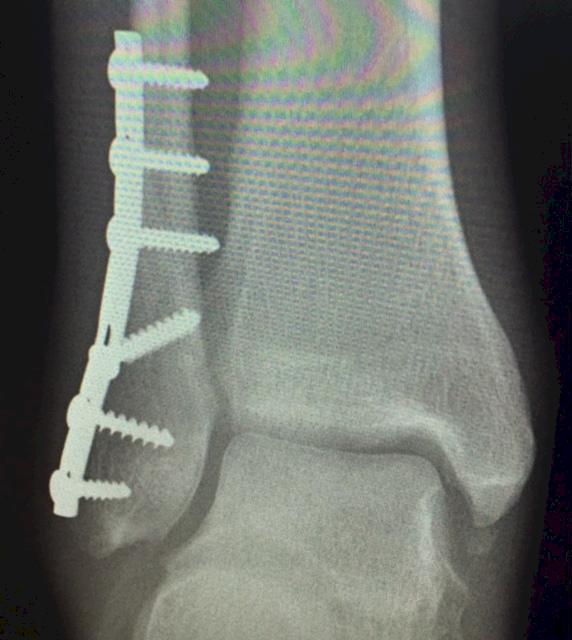
The most basic of fractures is the distal fibula (lateral malleolus) fracture. This typically occurs with an inward force of the ankle. If the bone is displaced, treatment is a plate and screws, (as seen above).
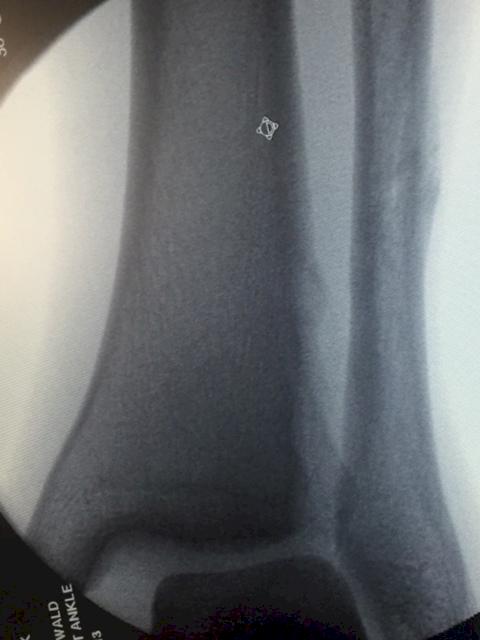
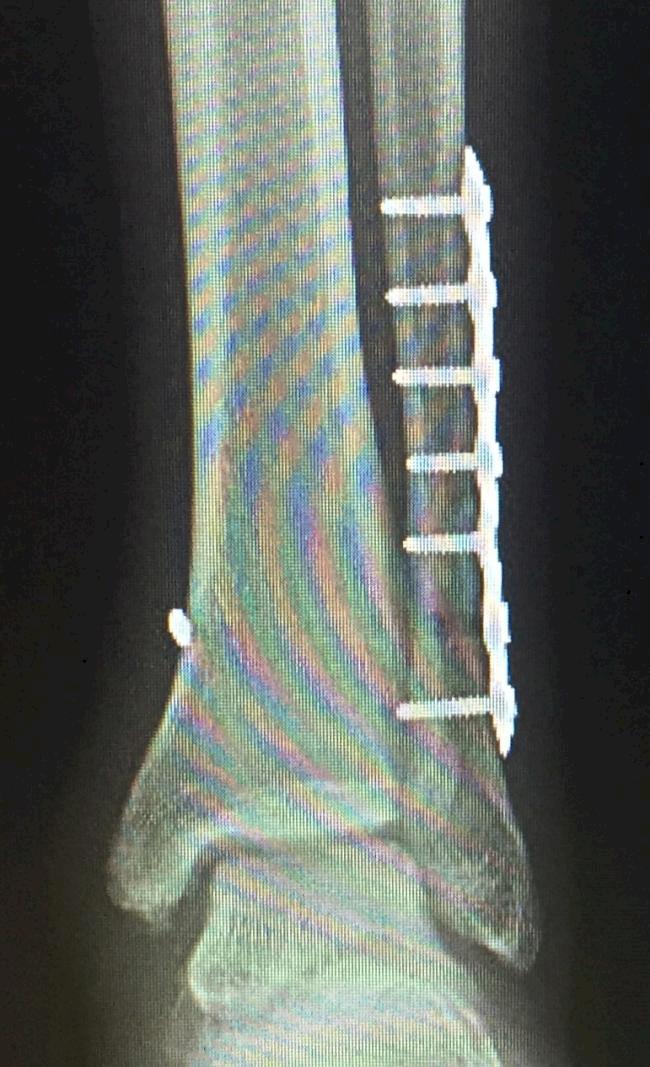
Another type of fracture involves an external rotational force on the ankle (such as when a football player’s foot is firmly planted in the ground and the body rotates internally around the ankle), which can cause a fracture of the fibula with an injury to the ligament that holds the tibia and fibula together (the syndesmotic ligament). This can cause widening between the two bones, and requires a plate and screws for the fibula fracture with fixation to hold the tibia and fibula together (as seen above).
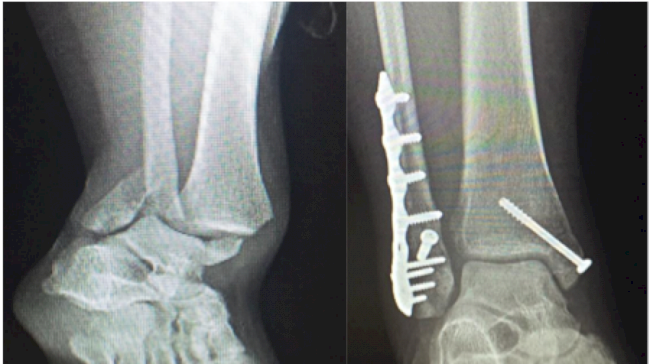
A more severe injury can be the ankle fracture-dislocation, where more than one bone is broken and the joint is significantly out of place. This requires a plate and screws on both the outside and inside of the ankle joint (as seen above).
As you can see, ankle fractures come in many variations and require a wide array of treatment options at the orthopedic surgeon’s disposal. Hopefully neither you nor your loved ones (nor your favorite Cyclone athlete!) will ever sustain an ankle fracture that would require surgical treatment, but if you do get hurt, feel free to give us a call at McFarland Clinic Orthopedics Department and we will certainly do our best to get you back on the road to recovery!
That’s it for now, until next time…Go Cyclones! Thomas Greenwald, MD





